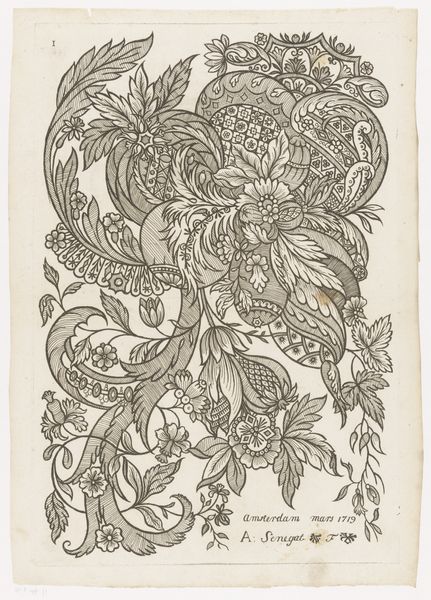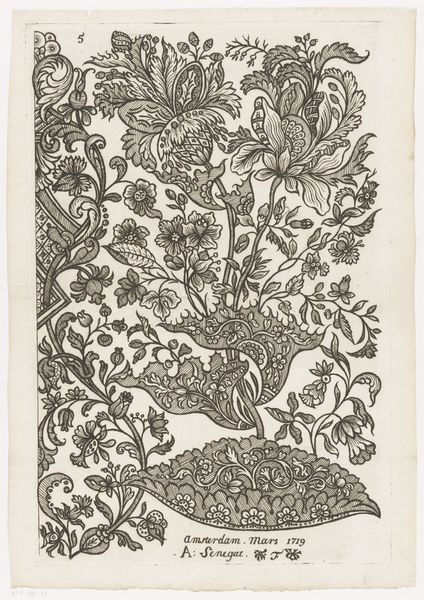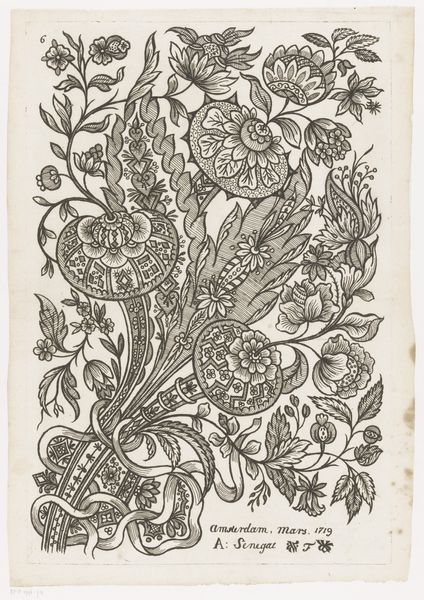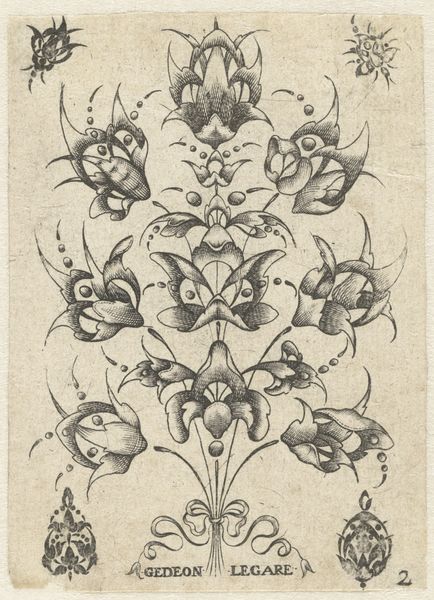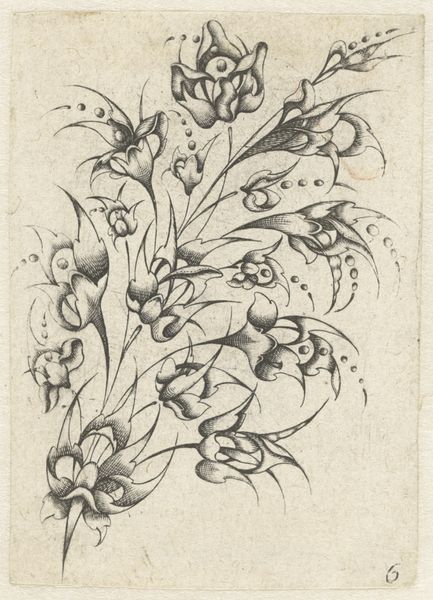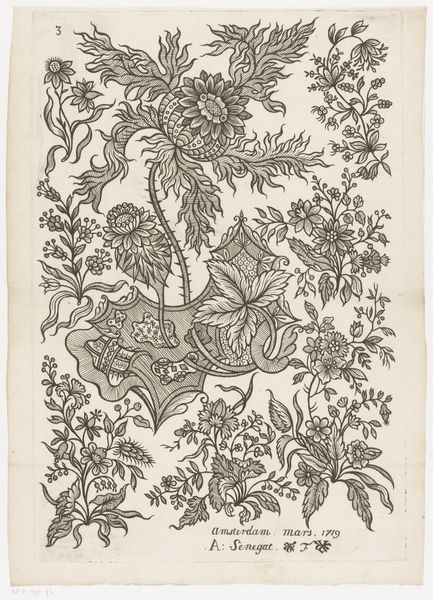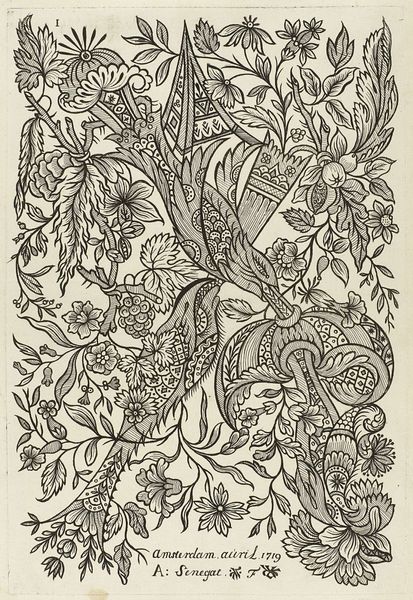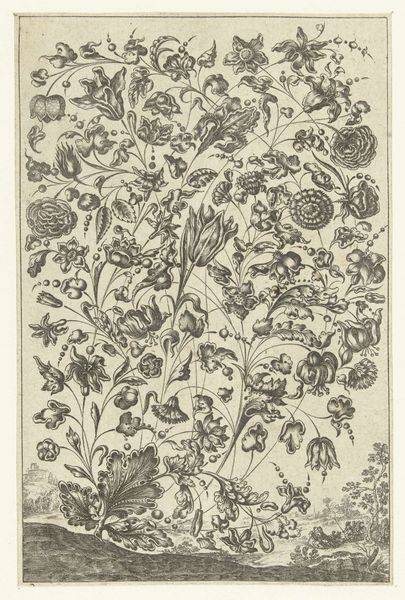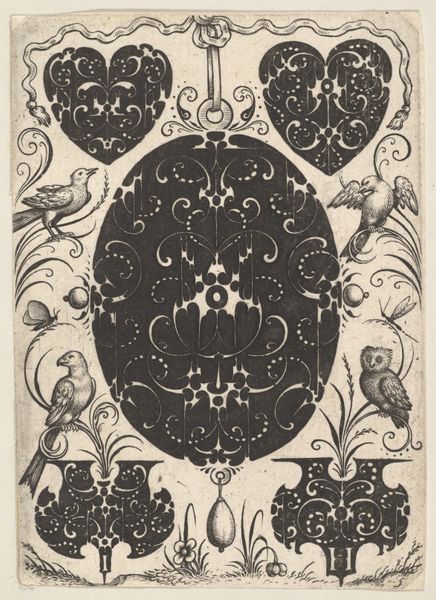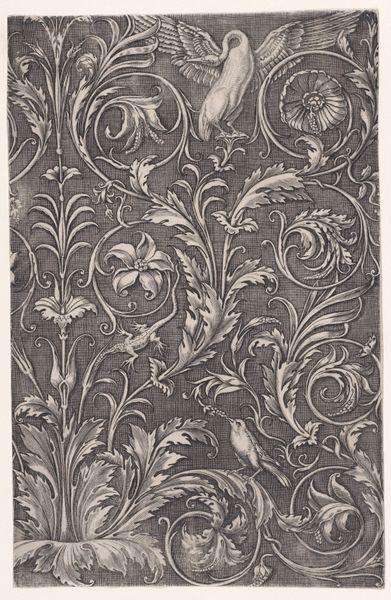
drawing, ink, engraving
#
drawing
#
baroque
#
ink line art
#
ink
#
line
#
decorative-art
#
engraving
Dimensions: height 390 mm, width 266 mm
Copyright: Rijks Museum: Open Domain
This is "Ontwerp voor textiel", a textile design made in Amsterdam in April 1719, by Alexander Senegat. Floral patterns were incredibly popular in the 18th century, especially in textiles. They reflected a deep connection with nature and the world. At the time, Dutch society was very interested in science and exploration, so botanical designs became a way to show off knowledge and taste. But there's more to it than just pretty flowers. These designs were often made for wealthy people, as they symbolized luxury and status. Also, textiles were a global commodity, which links this design to a history of trade, colonialism and cultural exchange. Looking at it today, this pattern reminds us of how art and design can reflect social class, cultural values, and the complex interactions between people and the natural world. It invites us to think about the stories woven into the fabric of our lives, both then and now.
Comments
No comments
Be the first to comment and join the conversation on the ultimate creative platform.
